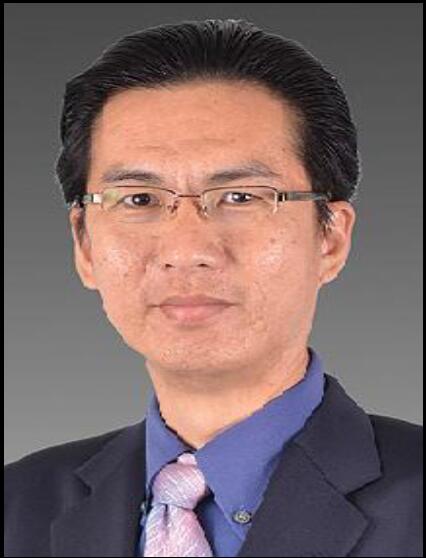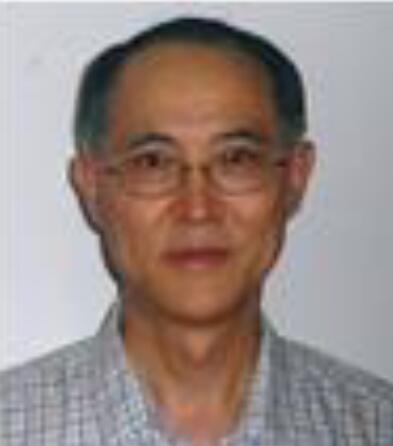Keynote Speakers

Prof. Ismail Musirin
Faculty of Electrical Engineering, Universiti Technologi
Mara, Malaysia
Prof. Ir. Dr. Ismail Bin Musirin obtained
Bachelor of Electrical Engineering (Hons) in 1990 from
UniversitiTeknologi Malaysia, MSc in Pulsed Power Technology in
1992 from University of Strathclyde, United Kingdom and PhD in
Electrical Engineering from UniversitiTeknologi MARA (UiTM),
Malaysia in 2005. He is currently Professor of Power System at
the Faculty of Electrical Engineering, UiTM and the Director,
Community of Research (CoRe), Advanced Computing and
Communication (ACC), Institute of Research Management and
Innovation, UiTM since Feb 2014.
He has authored and co-authored 2 books, over 300 papers in the
international indexed journal and conferences. He is also an
international journal reviewer for IEEE Transactions, Elsevier
Science, WSEAS, John Wiley, IET and some other publishers. He
has been the organizing chair for International Power
Engineering and Optimization Conference (PEOCO) for the past 11
years since 2007. He has delivered keynote speeches at Cambridge
University, United Kingdom, Dubai, Korea and Malaysia. His
research interest includes artificial intelligence, optimization
techniques, power system analysis, renewable energy, distributed
generation and power system stability. He is a senior member of
International Association of Computer Science and Information
Technology (IACSIT), member of Artificial Immune System Society
(ARTIST) and member of International Association of Engineers
(IAENG). To date he has examined more than 35 PhD theses and
more than 45 MSc theses from Malaysia and abroad. He is also one
of research grant evaluators for Ministry of Higher Education
(MOHE), FRGS.Recently (22 Jan 2017), UiTM has awarded Prof. Ir.
Dr. Ismail Musirin Silver Award for “Mentor Researcher” in the
UiTMResearch Summit Day (RSD) 2017. Speech
Titile: Embedded Optimization Technique in Distributed
Generation Planning in Power SystemAbstract:
The depletion of fossil fuel and climate change challenge has
gathered worldwide effort to develop sustainable energy systems.
In light of this, various forms of Distributed Generation (DG)
technologies have been connected to the system, either to the
transmission or distribution system. The installation of DG
requires optimisation process to identify the correct location
and sizing. Improper sizing and location of DG installation may
result to overcompensation or under compensation. Most
optimisation techniques are found to face inaccurate and stucked
at local minimum phenomena with computationally burdensome.
Thus, a reliable optimisation technique is crucial to address
this issue.
This speech shares a new proposed technique termed as Embedded
Meta Evolutionary–Firefly Algorithm-Artificial Neural Network
for Multi-DG planning in distribution system. In this study,
Meta Evolutionary–Firefly Algorithm (EMEFA) was initially
developed to expedite the computational time in multi-DG
installation with improved accuracy. Optimal location and sizing
are determined using the proposed EMEFA technique. Load in the
distribution system involving the residential, commercial and
industrial. These three load types are voltage dependent, and
active and reactive power components respond differently to
variations in voltage. The voltage dependent load has a main
impact on distribution system planning studies. In achieving
optimal allocation and placement of DG, two techniques were
proposed to study the DG planning which is the ranking
identification for DG installation and the integrated clustering
development and pre-developed EMEFA was employed. The aim of the
technique is to reduce the computational time during the
optimization process for DG planning along with the total losses
minimisation. Some example of results will be shared with the
attendees to aid the understanding of DG Planning.

Prof. Tiong Sieh Kiong
Department of Electronics & Communication Engineering, University Tenaga Nasional, Malaysia
Dr. Ir. Tiong Sieh Kiong is currently a professor in the College of
Engineering. He is also the Director for Institute of Sustainable Energy (ISE), Universiti Tenaga
Nasional. He received his B.Eng.(Hons), MSc and PhD, in Electrical, Electronic and System
Engineering from the Nasional University of Malaysia (UKM) in year 1997, 2000 and 2006
respectively. His research interests are renewable energy, artificial intelligence, data analytics,
microcontroller system and communication system. In his capacity, he has led and involved in
more than 40 research and consultancy projects for industries. He has published more than 200
technical papers in his research field. Besides, he has been also actively conducting workshops
and short courses that are involving artificial intelligence and microcontroller system in the
application of communications, renewable energy and machine system. He is currently a
Professional Engineer registered with the Board of Engineers Malaysia (BEM). He is also a
Member of the Institute of Electrical & Electronic Engineers (IEEE) and he was the Chair of its
Communication & Vehicular Technology Society (Malaysia Chapter) in the year of 2011 and
2012. Speech
Titile: Decarbonized Energy for Sustainable FutureAbstract:
Societies around the world inclusive Malaysia are dynamically growing in energy demand. Conventional energy generation which is heavily depending on fossil fuel and subsequently causing environmental issues has to be undergone verge of a profound and necessary transformation in the way of producing and energy usage. Cleaner, renewable options of energy such as solar, wind, hydropower, biogas, biomass, geothermal, ocean energy that are replenishable should be actively explored and deployed for advancing economic development, improving energy security, enhancing energy access and mitigating climate change. The importance of energy transformation has urged the United Nations General Assembly to outline a specific goal of Affordable and Clean Energy to be one of its seventeen goals in The Sustainable Development Goals (SDGs) of 2030 agenda. The aim is to improve energy efficiency and enhance international cooperation to facilitate more open access to clean energy technology and more investment in clean energy infrastructure. Meanwhile, Malaysia has set its target to achieve 20% renewable energy (RE) capacity mix by 2025. Hence conceptual framework and methodologies of decarbonizing energy for sustainable future are essentially anticipated.

Prof. Terry Y.-F. Chen
National Cheng Kung University, Taiwan
Professor Chen is a Professor of Mechanical Engineering Department at the National
Cheng Kung University, Taiwan. After receiving his Ph.D. from University of Florida, Prof.
Chen joined the Department of Mechanical Engineering, National Cheng Kung University
in 1986. He is the Editor of “Selected Papers on Photoelasticity”, SPIE Milestone Series,
1999. He was an Adjunct Professor in Department of Material Sciences and Mechanics,
Michigan State University in 2000. Since 2004, he served as the Chairman of
Photoelasticity Division of Society for Experimental Mechanics for 10 years, and received
Zandman Award in 2009. He was the Vice Chairman of Mechanical Engineering
Department in 2005, and the Director of Research and Education Division in 2010, and
Distinguished Research Fellow in 2012, Center for Micro/Nano Science and Technology,
National Cheng Kung University. He has published more than 100 papers, guest edited a
special issue of Journal of Strain, contributed chapter in more than 10 books, and gave
invited or keynote talks in various international conferences. His current research is
focused on materials/structures measurement and testing, digital photomechanics,
optical inspection and nondestructive testing for various applications. Speech
Titile: Coke Size Evaluation by a Computer Vision-based SystemAbstract:
Coke is used as a fuel and a reducing agent in smelting iron ore in a blast
furnace. The stability, production and coke consumption rate of the blast furnace may be
influenced greatly by the size of cokes. With large size coke, the furnace heat loss will be
increased, and the reduction capacity is reduced. With small size coke, the heat loss is
less, but the breathability of the furnace is also reduced which may resulting in a stinging
fire collapse. Traditionally, coke size is measured manually from the collected coke
samples by using various sizes of sieve, which is time-consuming and inefficient. Thus a
system to automate the measurement of coke size is needed. In this paper, a computer
vision system was developed to measure the coke size. The system consists a PC, a
highspeed shutter CCD camera, and a ring light set above the cokes. An image
processing scheme developed is able to distinguish the cokes in the image and to
determine the coke size using principal direction of moment and angular searching. Test
of this system on a real coke conveyer is described. The relationship between the surface
size measurement and real cokes was established using statistical data. Application of
this relationship to the other measurements reveals that an error of less than 10% can be
achieved.
|
